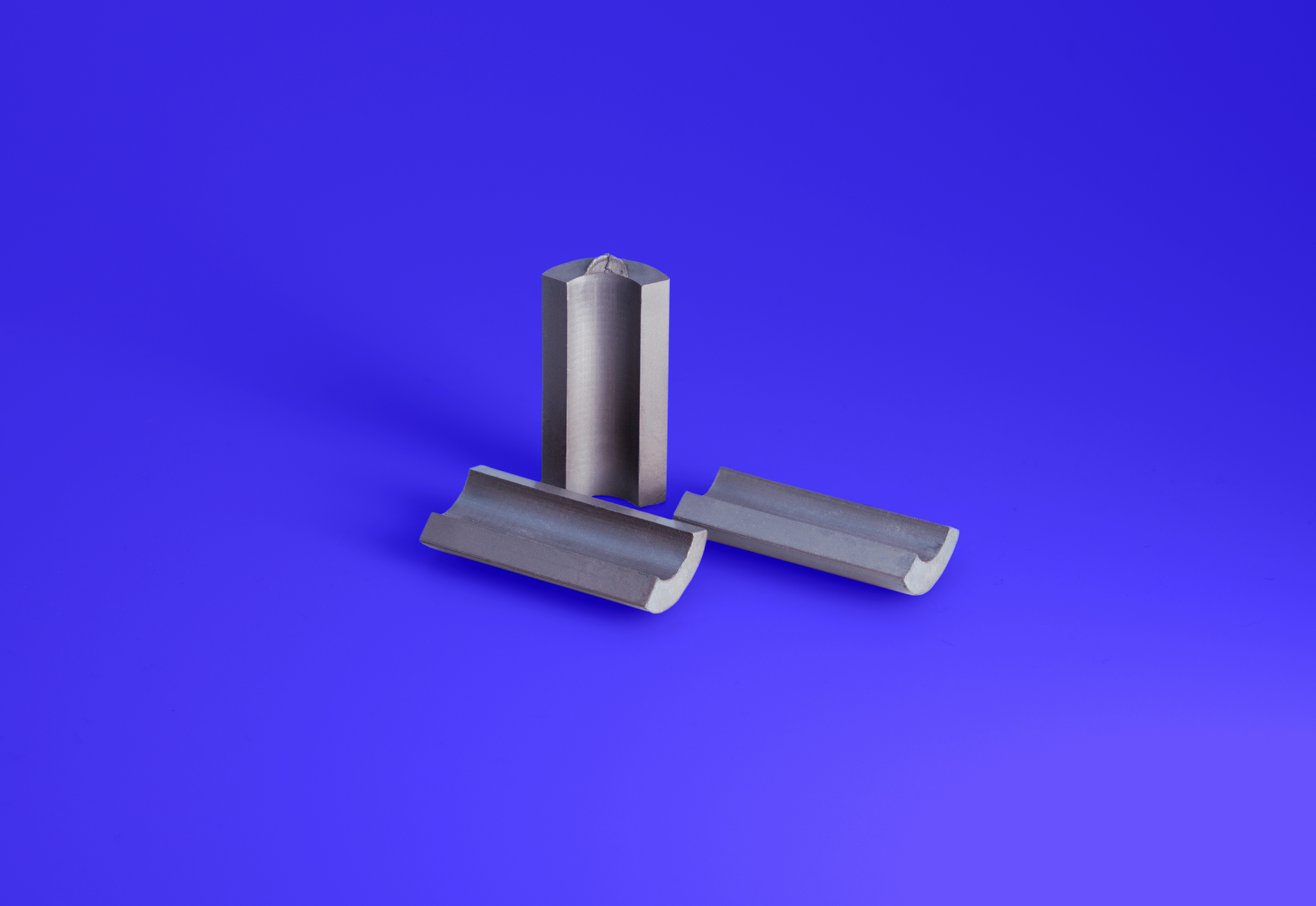Production of permanent magnets based on rare earths
Hard or permanent magnets are essential for many applications. Their use ranges from miniature magnets in vibration motors for cell phones, microphones and headphones to electric motors for e-bikes and passenger cars. However, conventional production of the magnets is resource- and cost-intensive. In addition, the geometries that can be manufactured are limited, which is a problem especially in view of the advancing miniaturization. Fraunhofer IFAM is therefore working on the development of processes with which hard magnets based on rare earths can be manufactured in a more resource-efficient and complex way.
New manufacturing processes enable complex magnet shapes for a wide range of applications
Permanent magnets are currently used in many applications and will be in the future. For weight and installation space reasons, the energy density of the magnets is crucial for many of these applications. Rare earth-based magnets (Nd-Fe-B, Sm-Co) are often the only alternative due to their outstanding magnetic properties. The high proportion of rare earths in the magnets makes them economically and strategically interesting.
Conventional production of Nd-Fe-B magnets involves pressing the metal powders into relatively simple geometries. More complex geometries have to be manufactured in a complex process using grinding and cutting. Depending on the geometry and component size, this involves high additional manufacturing costs and reduced raw material utilization.
To counteract this, Fraunhofer IFAM is working on the resource-efficient and economical production of complex Nd-Fe-B magnets. The focus is both on the application of already established industrial manufacturing processes such as metal injection molding (MIM) and on the development and evaluation of new processes, above all additive manufacturing.
Metal Injection Molding (MIM)
Metal injection molding (MIM) enables the production of complex geometries in high volumes and with high utilization of the materials used. At Fraunhofer IFAM, the process has been successfully adapted for the manufacture of rare earth magnets. Due to the diversity of our equipment, we cover the entire process chain from feedstock production to shaping, sintering, and metallographic analysis.
Additive manufacturing
For component design in the development phase and the construction of demonstrators, tooling is often too expensive or too complex. The solution to these problems can be magnets from the printer. Additive manufacturing enables the fast and cost-effective production of such magnets. For this purpose, magnetic powders are mixed with a polymer binder system and printed either as granules or as extruded filaments. The parts produced in this way exhibit a high degree of geometrical flexibility without the need for complex tool production. If the polymeric binder system remains in the component, these are so-called plastic-bonded magnets. Purely metallic permanent magnets can be produced by chemical-thermal removal of the binder and subsequent sintering.
The successful production of hard magnets requires extensive knowledge of the materials throughout the entire process chain, including characterization. With our decades of experience in the field of powder technology, we are exactly the right partner for the development of material and process solutions for your individual products.
 Fraunhofer Institute for Manufacturing Technology and Advanced Materials IFAM
Fraunhofer Institute for Manufacturing Technology and Advanced Materials IFAM